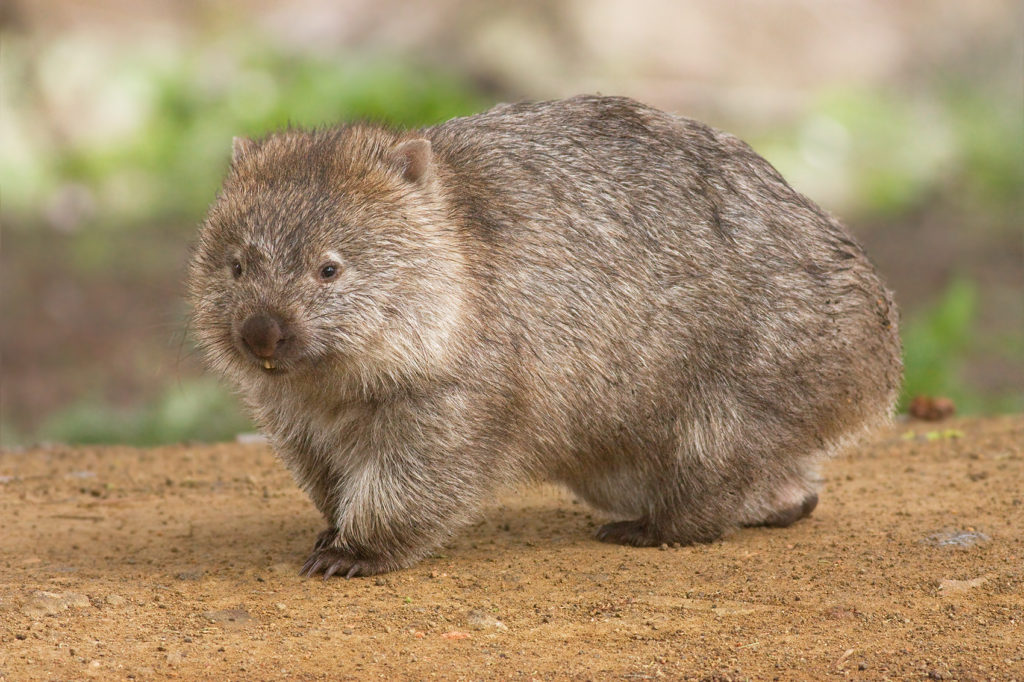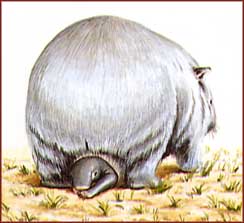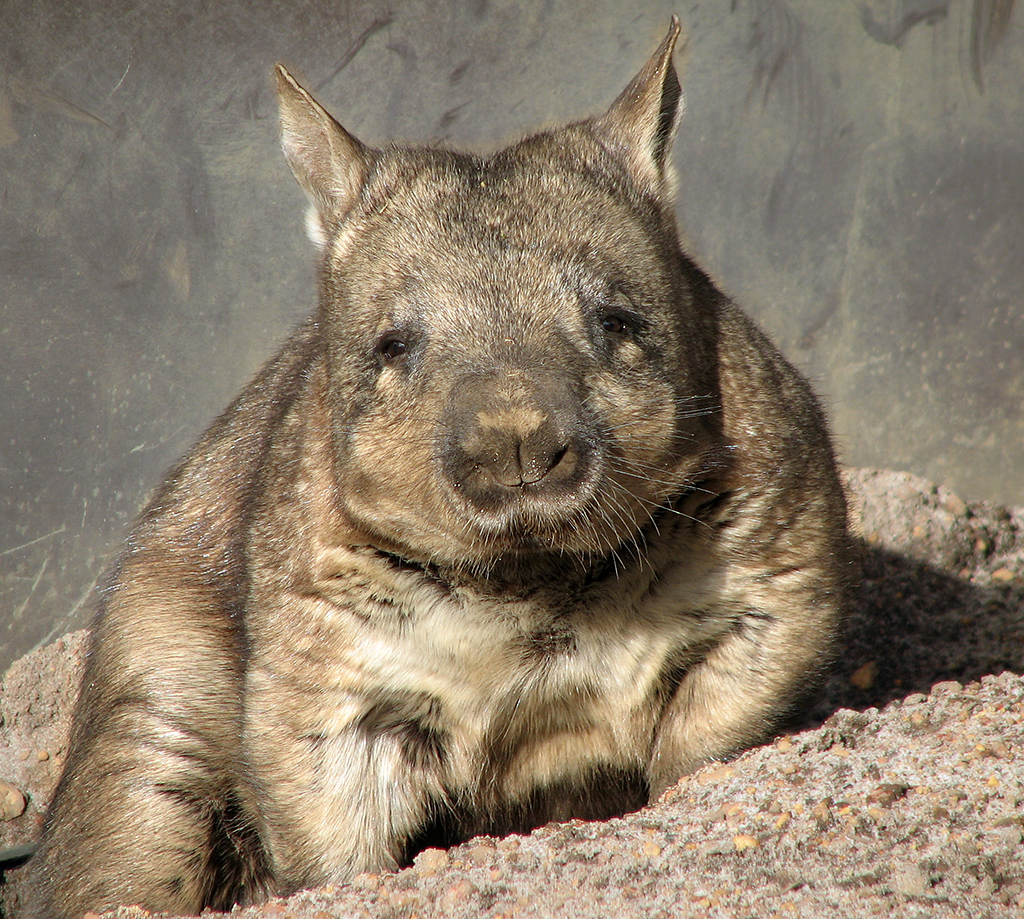Groundhogs have a day, so why not wombats? At least that’s what some unknown wombat lover decided when creating Wombat Day on October 22, 2005. A man named Chris Mabe created a Facebook page for Wombat Day several years later, so perhaps we should give him credit for the whole wacky thing..

It is a comical day to celebrate wombats, and eat lots of chocolate and wine gums. Wine gums, apparently, are akin to gummy bears and Swedish fish—substitution is allowed. October 22 was chosen because it is around the date when spring planting occurs in Australia. For whatever reason, wombats now have their own day, so let’s celebrate them with a little natural history.
Wombats live in southeastern Australia and on the Australian island of Tasmania. There are three species: the common or bare-nosed wombat (Vombatus ursinus), and the southern and northern hairy-nosed wombats (you can tell them apart by whether or not their noses are—hairy!). They are marsupials, like all of Australia’s endemic mammals, and closely related to koalas. But they are distinctive because the pouches in which they shelter their young face backward. Right, towards the southern end of a north-going wombat. It’s not stupid, though, it’s smart. Wombats are great diggers, creating burrows in which they spend most of their lives. If the pouch faced forward, it would fill with dirt as the female digs with its powerful front legs and claws.

Digging is what wombats do. They dig large and complex burrows, up to 9 feet deep and 20 feet long, with branching chambers. They are generally solitary, but in some cases they make communal burrows for a group, called a “mob.” The burrows are so massive that other animals often take up residence. With the massive fires occurring in Australia during 2019, wombats became Internet sensations because they were said to herd other animals to safety in their burrows (not true, say scientists—no herding, just other creatures taking advantage of the wombats).
Wombats do most things slowly. They are short and stocky, waddling when they are moving on land and wombat-paddling when they are swimming (all website, however, warn that wombats can move very quickly when motivated—25 miles per hour for short distances). They are herbivores, and a long and complex digestive tract allow them to eat and digest the coarsest of plant materials But they digest slowly—it takes 4-6 days for a meal to exit a wombat. And when it does, it leaves in a series of very distinctive, almost cube shapes pellets numbering up to one hundred per day (enough said here, but this is quite a popular topic on the Internet).

The young grow up slowly, too. After a short gestation period of about 30 days, a female wombat gives birth to a single “joey,” about the size of a jelly-bean. The young wombat stays in the backward-facing pouch for 6 to 10 months before even peeking out at the world. But then it still hangs around, living in the pouch for another 8 to 10 month. Not long after that, the young wombat is sexually mature and starts the whole—slow—cycle again.
Wombats may be slow, but they get big. They spend most of their time feeding, and their sluggish metabolism lets them pack on the pounds. They can reach almost four feet long and weigh up to 80 pounds, making wombats one of the world’s largest rodents. They have few natural predators, but when they are threatened, they dive into their burrows head-first, leaving their posterior, which has thick, tough skin, as a barricade to entry.
Through history, Australians were not fond of wombats. Wombat burrows pock-marked fields and pastures, a nuisance to human settlers. In 1906, Australia placed a bounty of wombats, and tens of thousands were shot for the reward. The bounty is gone, but wombats are still considered vermin and, hence, taragets for unlimited hunting. Wombats also cause considerable damage to vehicles through night-time collisions as they move—slowly—along and across highways.
Which brings us back to the beginning. Why have a special day for an animal that most people want to be rid of? Any excuse for a party, I guess. And this animal is almost as cute as its cousin, the koala. Hurray for wombats!
References:
AFP Fact Check. 2020. Australian bushfires: animals that take refuge in wombat burrows usually uninvited, experts say. Available at: https://factcheck.afp.com/australian-bushfires-animals-take-refuge-wombat-burrows-usually-uninvited-experts-say. Accessed February 11, 2020.
Australian Academy of Science. All about wombat scat. Available at: https://www.science.org.au/curious/earth-environment/all-about-wombat-scat. Accessed February 11, 2020.
Australian Museum. Common Wombat. Available at: https://australianmuseum.net.au/learn/animals/mammals/common-wombat/. Accessed February 11, 2020.
National Geographic. Common Wombat. Available at: https://www.nationalgeographic.com/animals/mammals/c/common-wombat/. Accessed February 11, 2020.
Wombania.com. Wombat Day October 22. Available at: https://www.wombania.com/wombat-day.htm. Accessed February 11, 2020.
